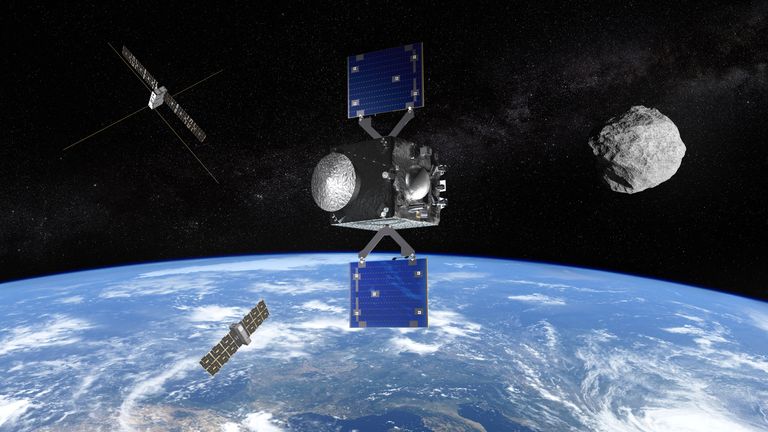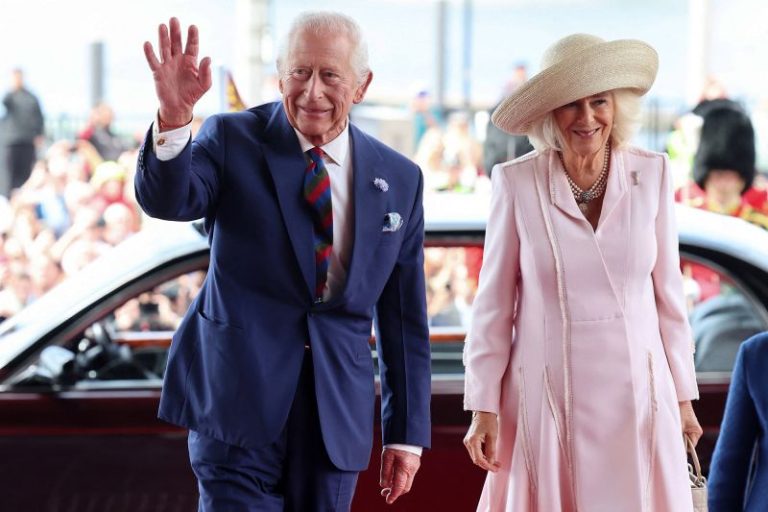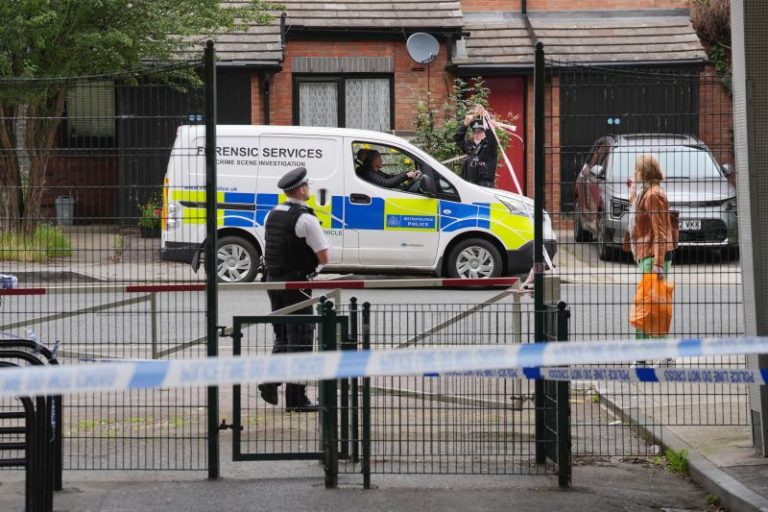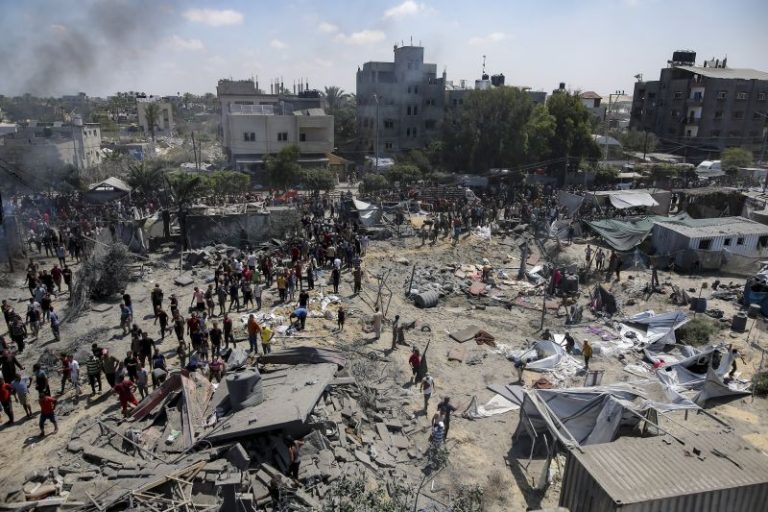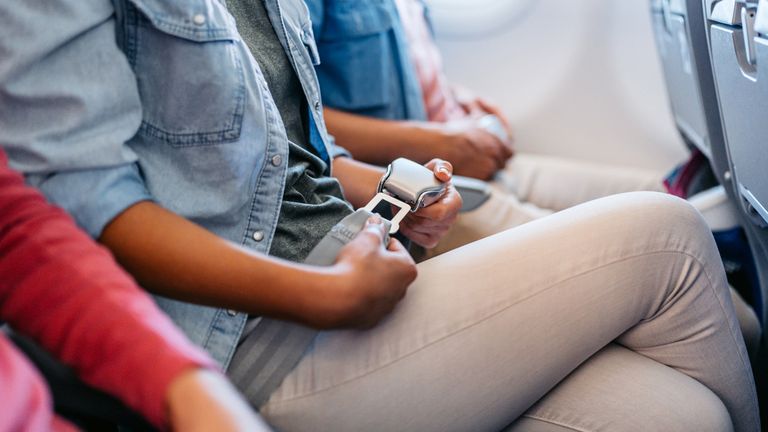Experts believe turbulence is getting worse and, due to climate change, that trend is expected to continue.
Professor Paul Williams, an atmospheric scientist and co-author of the first global study into climate change’s impact on turbulence, warned last year that unless something is done to counter climate change, flights will only become increasingly disturbed by it.
But does an increase in turbulence pose a real threat – and should passengers be concerned?
We spoke to some pilots to find out.
Chris McGee, a commercial pilot of nearly 30 years, has flown both long and short-haul flights.
“In terms of if an aircraft would crash from turbulence, that’s about the same likelihood as me stepping outside the door and having a meteorite land on my head,” she says.
“Aircraft are way overbuilt,” she continues.
“And as new technology comes in, we have new materials, things like carbon fibre, which are much more flexible and much more able to ride the turbulence in an even safer and actually even more comfortable way, so that likelihood is incredibly slim.”
Turbulence may be incredibly unlikely to cause a crash, but there have been reports of mid-flight terrors of late.
An Air Europa flight from Madrid was forced to make an emergency landing earlier this month after severe turbulence hit, resulting in 30 people being treated in hospital with minor injuries.
That incident came only weeks after a 73-year-old British man died from a suspected cardiac arrest and at least 30 others were injured following “sudden extreme turbulence” on a Singapore Airlines flight from London to the city-state in South East Asia.
These incidents, Chris says, are “extremely rare”.
“I’ve only had a couple of experiences of anything even approaching what we would call severe. And that’s pretty much the same across all my pilot colleagues,” she adds.
“The very extreme type of turbulence is really, really rare. All the other stuff [less severe turbulence] is pretty common to be truthful.”
What exactly is the ‘extreme type’?
The most common instances of turbulence are often associated with storm clouds, which are usually well forecast and monitored. This allows planes to either fly around them or prepare passengers and the crew in advance of hitting turbulence, meaning seatbelt signs can go on well in advance.
But the more extreme type of turbulence Chris refers to is known as clear-air turbulence (CAT) and is considered more dangerous than regular turbulence as there are no visual signs, such as clouds.
This invisible vertical air movement usually occurs at and above 15,000ft and is mostly linked to the jet stream.
CAT generally can’t be detected ahead of time, and while aircraft themselves can deal with extreme turbulence, Chris suggests it is pilots’ inability to detect it that poses the biggest threat.
“One of the dangers of CAT is it can be insidious,” she says.
“It can just start with moderate becoming severe or it can hit you very suddenly and severe right from the start.
“And again, at the moment, we don’t have anything in our arsenal to predict how it’s going to happen. We can’t see it. We can’t predict. We don’t know how the severity gradient is going to occur.”
She reiterates that the aircraft itself is “usually very good at riding the turbulence”, though the autopilot may disconnect itself if it becomes “a little too much to handle”. It’s then down to the pilot to hand fly it.
Chris, who has experienced CAT twice in her career, believes this is the type of turbulence that affected the Singapore Airlines flight.
And it’s this type of turbulence that’s long been predicted to increase due to climate change.
‘Very disturbing’ for passengers – but pilots have it under control
Speaking from her own experiences with CAT, Chris says: “Our training kicks in. You have what we call the startle effect because obviously you’re not expecting it. It’s like somebody standing behind the door and going ‘boo’ – every human being will react.
“But once that startle effect has gone, which is relatively quick, our training then kicks in and we are taught to fly the aeroplane. And that is exactly what we do. Obviously it’s not a pleasant experience, but once the initial startle factor has gone, you just get down to flying the plane.”
Chris acknowledges that experiencing CAT or other types of severe turbulence is “very disturbing” for passengers because they have “absolutely no indication of what’s going on whatsoever”.
“We on the flight deck have a little more indication because of the fact that we got all the instrumentation, so we can look at the rate of climb and descent, and we can actually see what is occurring to the aircraft in terms of altitude gain or loss or movement to the controls,” she adds.
“So passengers have got no clue what’s going on because they’re just looking out the side window and see us going up and down and feeling the G-forces that they’re experiencing.”
James Downey, who has been a first officer – or co-pilot – at a low-cost airline for nine months, has experienced CAT once.
“There’s an element of nerves to it,” he admits. “Especially when I hadn’t experienced it before. But it [the area where there was CAT] had been reported by an aircraft in front of us. We descended, which is the thing to do in this situation.
“I put my shoulder straps on and it was a bit bumpy! We sat the cabin crew down in advance and informed the passengers.”
The incident only lasted around a minute, and despite his slight nerves, James says he was pleased with how the crew and the aircraft’s systems dealt with it.
And according to him and Chris, that’s how most of these encounters tend to go.
“I would say it’s very, very uncommon for pilots to be in a situation with turbulence where they feel unsafe,” James adds.
What can you do to stay safe?
Deaths from turbulence are extremely rare, and the US Federal Aviation Administration (FAA) said 146 passengers and crew have been seriously injured by turbulence between 2009 and 2021.
But minor injuries during turbulence are more frequent.
Your first line of protection, according to Chris and James, is to heed the crew’s seatbelt warning sign when it pops up. Chris suggests some passengers, particularly frequent flyers, may have become slightly desensitised to the warning and take their time to return to their seats and get their seatbelts on.
However, the pilots have also pointed out that CAT’s unpredictable nature means they are sometimes caught out and unable to get the seatbelt sign on early enough. So what then?
Stay seated for as much of the flight as possible and leave your seatbelt on, even loosely.
“It’s there for a reason and that will prevent you from any injuries that you might incur,” Chris says.
Ultimately, she says, follow basic instructions when flying and you needn’t worry.
“Flying is a beautiful thing,” she says. “It’s a fantastic privilege that we are able to provide it for people, and it would be a phenomenal shame if people got put off by wrongly believing there’s a massive increase of dangerous turbulence.”
Is anything being done about turbulence?
Industry bodies such as the National Transportation Safety Board are gathering data from pilot reports to try to determine better ways to detecting CAT, which might allow pilots to either steer clear of routes where they know CAT could affect them, or to simply help them prepare for it in a similar way to more detectable forms of turbulence.
Meanwhile aviation leaders are looking at how to reduce flight CO2 emissions to help tackle climate change – though the industry is responsible for just 2.5% of global CO2 emissions.
This post appeared first on sky.com

